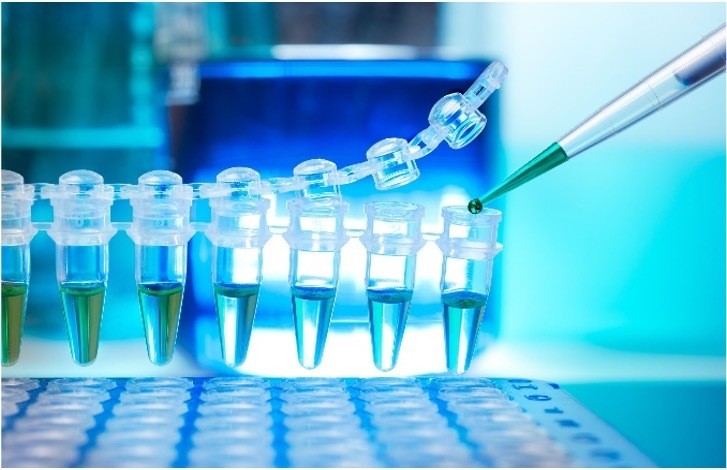Molecular biological methods have become essential in developing highly stable cell lines in the biopharmaceutical industry. PCR-based techniques, renowned for their precision, scalability, and affordability, are precious for screening and characterizing cell lines. Quantitative PCR (qPCR) is commonly employed for determining transgene copy numbers, although it suffers from high inter-assay variability.
Digital PCR (dPCR) presents an alternative methodology, facilitating the absolute quantification of DNA molecules within a sample. This technique employs compartmentalization, whereby the reaction volume is partitioned into numerous segments before amplification, typically achieved through nanoliter droplets utilizing nanofluidics. Droplet digital PCR (ddPCR) gene expression assays provide accurate quantification of small-fold changes in gene expression, making them suitable for detecting targets present at low abundance or in samples containing PCR inhibitors. ddPCR gene expression assays are available in the probe or EvaGreen Assay formats, with protocols designed for use in both One-Step and Two-Step RT-ddPCR procedures.
Within a ddPCR laboratory, quality control primarily focuses on identifying and rectifying errors in test performance and validating test outcomes. This encompasses both internal and external quality control measures. Internal quality control involves monitoring laboratory performance using control materials and conducting repeat measurements.
Must Read: Assay Lab: The Heart of Biomedical Research and Development
- Errors can arise throughout the sample handling process, spanning collection, transport, and nucleic acid extraction. Bacterial contamination, particularly from DNAse, poses a risk of degrading cellular DNA, emphasizing the importance of timely processing to prevent bacterial growth. While collecting samples in sterile containers is recommended, it may not mitigate contamination if samples are already compromised. Moreover, the delicate nature of DNA makes it susceptible to breakage from excessive shaking during extraction, leading to degraded DNA that can yield false negative or poor-quality PCR results.
- Phenol, porphyrin, SDS, proteinase-K, and heparin are known PCR inhibitors. It’s crucial to ensure the complete removal of SDS and phenol during DNA extraction, while blood samples are ideally collected in EDTA to avoid heparin’s inhibitory effects. Proteinase K can be rendered inactive through heating. Additionally, contaminants like chocolate in mouthwash DNA extractions can inhibit PCR. Dilution of the sample can mitigate the effects of inhibitors by reducing their concentration.
- Numerous factors impact PCR efficiency, such as reagent quality, primer specificity, buffer pH, and DNA quantity and quality. Each component plays a critical role in achieving optimal PCR results.
- PCR, known for its high sensitivity, can amplify a single DNA molecule into billions within just thirty cycles. However, this efficiency poses a challenge: carryover contamination. The amplified product, serving as an ideal template for reamplification, can inadvertently transfer between samples, leading to false positives and complicating assay interpretation. Addressing this contamination is a significant challenge in PCR-based assays.
- False negatives are a significant concern in PCR assays and warrant careful consideration. Including robust positive, negative, and internal controls is vital to address this issue effectively. An internal PCR control can be precious in minimizing false negatives. This involves integrating an extra pair of primers in the reaction tube to amplify an unrelated DNA segment. If the internal control yields a positive result while no amplification of the target DNA is detected, it confirms a true negative outcome.
- Calibrating instruments are often overlooked in PCR labs despite being crucial for optimal performance. Thermal cyclers, like other lab equipment, require periodic calibration to ensure accuracy. A common issue is the temperature disparity between the block/reaction tube and the displayed temperature. If the block temperature is lower than indicated, primers may anneal nonspecifically, leading to non-specific amplification. Conversely, higher block temperatures can result in elevated denaturation and annealing temperatures.
Conclusion
A comprehensive suite of services includes digital PCR service and PCR service, offering robust platforms for precise quantification of nucleic acids. Furthermore, laboratories specializing in qPCR assays and ddPCR methods provide advanced techniques for accurately detecting and analyzing gene expression patterns. Additionally, their expertise extends to LC-MS/MS service, enhancing molecular analysis capabilities and furnishing comprehensive insights into gene expression dynamics.

